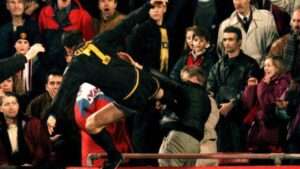The wonderful thing about Serie A is that there is never any shortage of bitter local rivalries. Every week, it seems, two halves of a city are at each other’s throats, ready to duke it out for three points and — more importantly — local bragging rights. The three most important splits are in the cities of Turin, Milan, and the capital, Rome.
TURIN: Juventus vs. Torino
This industrial city in the north of Italy is rich with history, but perhaps features the most imbalanced rivalry of the major urban centers. In fact, for Juventus, Italy’s most successful club, Torino is hardly even considered a rival. The Vecchia Signora, as Juve is known, is much more preoccupied by Fiorentina.
Juventus’s fan base extends throughout Italy and, bizzarely, is particularly active in the South. The stereotype, however, was that Juve was a club supported entirely by employees of the Fiat car company. The reason is that for most of its history Juve was financially supported by the Agnelli family, which owns Fiat.
But it is Torino’s fans who are better known as the urban working-class type. They are also notoriously cranky, threatening to riot at every bad turn. When Torino sold its best player after finishing third in Serie A in 1992, La Granata’s supporters took to the streets. And as they boycotted home games the next season, Torino slumped to relegation.
Perhaps it is understandable since the glory days for La Granata, as the red-clad Torino is known, were brief and long ago. When it was Il Grande Torino in the 1940s, under World Cup-winning coach Vittorio Pozzo, Torino was one of the finest sides ever to grace the Italian league. But since May 1949, when the squad was wiped out in a plane crash outside Turin, La Granata has only won one league title.
During that same spell, Juve has given its fans plenty to shout about with 20 Serie A titles, boasting dominance in every decade. And, as if Juve fans were not reviled enough for their team’s success, the club is widely seen as a favorite of the establishment, with accusations of favoritism always swirling.
In 2006, those accusations materialized into charges of match-fixing that saw Juventus stripped of their previous two scudetti, removed from the Champions League and relegated to Serie B with a 17 point deduction.
MILAN: A.C. Milan vs. Internazionale
One of Italy’s oldest clubs, A.C. Milan has historically been known as the club of Milan’s left-wing and working-class population. That changed somewhat when the Italian real estate and media tycoon, and, later, conservative prime minister, Silvio Berlusconi acquired the club in 1986.
Still, clouds of red smoke from the flares fans traditionally set off billow through the stands of the San Siro stadium in Milan every weekend. Those are the Rossoneri’s doing. Because of the flares, A.C. Milan, nicknamed Rossoneri for their red and black jerseys, always look like they’re playing with riots on the terraces. But they are considered relatively tame compared to the Inter fans who share their stadium.
Inter’s fans, which contain a large right-wing element and tend to draw from the wealthier Milanese, are notoriously rowdy. Their behavior regularly lands Inter on the wrong side of FIFA’s disciplinary sanctions. Since 2001 alone, they have caused at least four games to be halted or abandoned because of the barrage of projectiles they were throwing on the field.
In recent seasons, the two halves of the city have both basked in their team’s success with Inter claiming the last three scudetti (the 2005-2006 title was assigned to them after a match-fixing scandal). A.C. Milan, meanwhile, has made its mark on the Champions League, winning the competition twice in the last six years.
ROME: A.S. Roma vs. S.S. Lazio
Similarly to Milan, the Italian capital’s fans historically break down along geographic and political lines, though both clubs are known to have several factions of Ultras. These are the extreme pockets of particularly vocal — and sometimes violent — fans who, in Italy, are known for their right-wing tendencies.
Roma fans are traditionally from the city itself, since the club was originally based in the working-class district of Testaccio. Their fans fall across the political spectrum where Lazio’s supporters — who in all likelihood do as well — are closer associated with the right. To rival teams, Lazio has still not shaken its reputation for being Benito Mussolini’s favorite club.
Geographically, Lazio was founded to draw support from the regions around the city and Rome’s more rural suburbs. And ever since, the Rome derby has been known as the fiercest in Italy.






